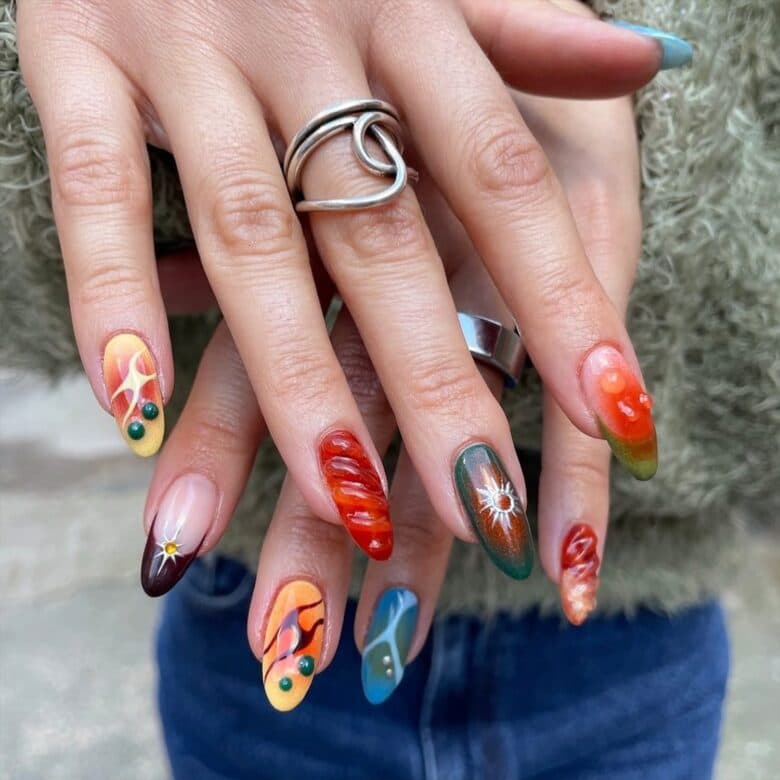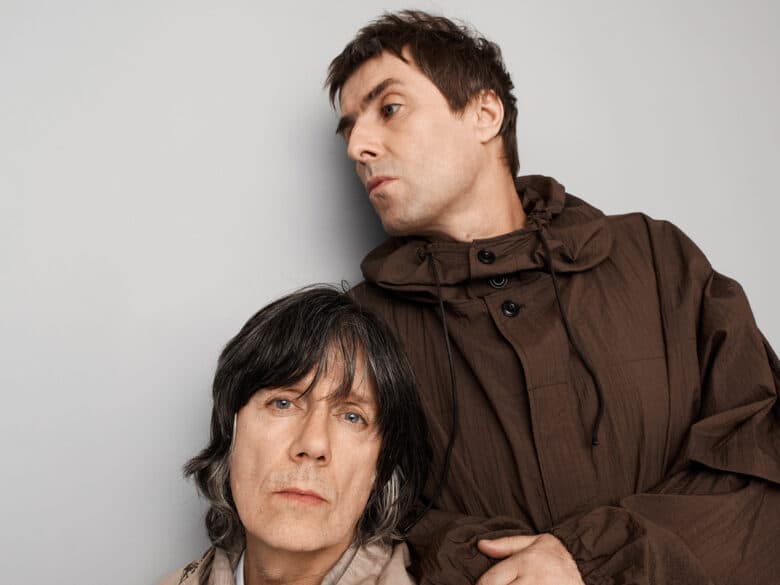Can diversity exist in the metaverse?

While the metaverse is still in its infancy you may already be thinking about “how you want to create your story in the virtual space”, says Kerry Murphy, the founder and CEO of the digital fashion design and animation start-up The Fabricant, on the Welcome to the Metaverse podcast. “Of course, [our story in the metaverse] is much richer than it is in our physical lives. In my physical life I’m stuck being this person – this white, heterosexual male from Finland… but in the virtual space I can be 20, 30 different versions of myself.”
Over the past year, many of us have had to consider who we will be in the metaverse. Maybe you want to don a Medusa-inspired snake weave or traipse around in a dress created from lava. It’s all fun and games, of course, until you dig a little deeper and things start to get complicated. Should people accurately represent who they are in real life? What does this mean for gender identity and race? And what are the implications of a cis white man cosplaying as a Black woman?
A lot of these issues already exist in the fashion industry, which has slowly but surely evolved into an increasingly diverse, equitable and inclusive space – both for consumers and those who work in it. And more than ever we’re allowed to show up just as we are. Fewer shows have only white models walking the runway, people with disabilities feature in editorial spreads, soft and luscious bellies grace magazine covers and demands for size inclusivity are being answered. Meanwhile, BIPOC designers, photographers, writers and everyone in between are finding that there’s finally a seat for them at the table. But now, with the metaverse set to change the landscape, are we at risk of losing all this progress?
Digital fashion has become a conduit between the metaverse and mainstream culture. From Balenciaga creating skins for Fortnite players and Nike acquiring the NFT studio RTFKT, to Jonathan Simkhai showing his autumn/winter 2022 collection on the online multimedia platform Second Life, fashion’s digital transformation is inescapable. And with every development we are forced to reckon with what we want the future of fashion to look like.
“In real life, we still have not got the premise of diversity and inclusivity right,” says Lizzy Bowring, a London-based catwalk director, fashion forecaster and professor at the Digital Fashion Group Academy. As we speculate and attempt to predict what the future of the metaverse holds, she says, we need to “get it right in real life” before we can even begin to hope to have an inclusive metaverse.
“We’ve seen price differences emerge based on race, gender and skin colour for the popular NFT project CryptoPunks,” says Lokesh Rao, the co-founder and CEO of Trace Network Labs, a decentralised protocol that’s enabling lifestyle and luxury brands to enter the metaverse. At the end of 2021, Canadian software engineers CryptoPunks revealed their new popular NFT, Meebits. Through a lottery system buyers bought a randomly selected Meebit, but many in the NFT space began to notice that people were dumping predominantly dark-skin and female Meebits on the NFT marketplace OpenSea for 30% less than their original price.
Conversations about digital diversity are nothing new. In 2018, photographs of the dark-skinned model Shudu Gram caused controversy when it was revealed that she wasn’t a real person at all, but a fictional character created by the white British fashion photographer and visual artist Cameron-James Wilson. Of course, before Shudu there was Lil Miquela, the ethnically ambiguous and perfectly freckled CGI model created by the Los Angeles-based start-up Brud. Since 2016, the omnipresent influencer has attended fashion shows, released music and even been a contributing arts editor for Dazed Beauty.
While these virtual models represented an exciting digital acceleration in fashion, they also left people feeling bewildered. Wilson explained to Harper’s Bazaar that he had created Shudu in response to a “movement with dark skin models”, suggesting that she was simply on trend. It began a wider conversation about digital blackface and the implications of borrowing physicality in the name of diversity.
Meanwhile, Miquela garnered criticism for being the physical culmination of the fetishisation and distortion of Black features, a phenomenon popularised by the standard of beauty set by the Kardashians, which seems unattainable unless you have Facetune or a Brazilian butt lift fund. This illuminated a clear disconnect between appropriation and celebrating diversity. And with no one willing to answer for it – Kim Kardashian has denied appropriating Black culture in numerous interviews – “there’s a chance that the problems of our physical world could spill over into the metaverse, and that is a concern”, Rao warns.
Putting fashion into the hands of big tech makes things even more complicated as the tech industry remains predominantly white and male. Less than a fifth of IT specialists in the UK are women according to a 2021 survey by BCS, the Chartered Institute for IT. Based on a report from New York University’s AI Now Institute, this lack of diversity is resulting in harmful biases being implemented in AI. One clear example of this is how facial recognition technology has been continually proven to uphold systemic racism.
And while we’re being sold the pipe dream of being whoever we want to be in the metaverse, the reality of a decentralised platform where no one has to answer to anyone means that misrepresentation, catfishing, digital blackface and identity tourism are set to be prevalent. “There’s always a chance that people could take up identities that are not their own, especially racial identities,” Rao says. “People could resort to representing cultures or races that they know little to nothing about, just to experiment with it.” But when it comes to preventing this our ideas are still so primitive. Rao suggests that with regard to the fashion industry it’s the brands that are responsible – “and [they] should pay closer attention to the person behind the avatar than the avatar itself”. As for a solution, he says that linking avatars to social media platforms or other forms of real identification “could help solve this problem to a certain extent”.
But we’ve already seen this play out: in 2015 Facebook received backlash from transgender users, drag queens and domestic abuse victims for introducing its “real name” policy, which forced people to use the names on their government-approved IDs, resulting in deadnaming users and even putting some in danger. The social media site later publicly apologised for the move. Fortunately there are people trying to ensure that we avoid repeating our IRL mistakes online. Last year the London-based collective the Institute of Digital Fashion (IoDF) released a diversity report entitled “My Self, My Avatar, My Identity”, for which it surveyed 6,000 people around the world to better understand how it could be more inclusive and diverse in the metaverse.
IoDF found that while, in theory, the possibilities are endless, in the currently available metaverses there are limited options for Black hairstyles and non-binary representations, and there’s no way to display disabilities. This makes the possibilities quite finite. “We are advocating to use digital to not just recreate an old system virtually, we want accessibility and innovation to be at the forefront of this movement,” says Leanne Elliott Young, IoDF’s co-founder and CEO. “So I’m concerned people might not understand this need for change but will only replicate an already damaged business model.”
Earlier this year, fast-fashion giant PrettyLittleThing (PLT) revealed its first virtual model, Luna, a light-skin, racially ambiguous model, sparking a backlash from customers: while some wondered what the point of showing real clothes on a digitally rendered body was, others remarked they were shocked that PLT wouldn’t just hire an upcoming WOC model. “We will be looking to design more models in our new virtual world to show different shapes, sizes and ethnicities,” a spokesperson for PLT told me over email. “We have no plans to stop using human models across our e-comm platform.” But while the company did respond to requests for comment, they chose not to answer questions about who was involved in the process of Luna’s creation.
Not all tech companies working in the fashion metaverse are white and male. In 2019, Zimbabwe-born Michael Musandu and Ugnius Rimsa – who identifies as plus size – launched Lalaland.ai. The Netherlands-based company, whose tagline is “Bye-bye, one size fits all. Hello, diversity”, creates artificially rendered, hyperrealistic models for companies instead of real-life ones. These models are more like Shudu than Lil Miquela, unclockable and devoid of uncanny valley, making them look very human.
Over the phone, Musandu tells me that one of the biggest problems e-commerce stores have with showing a diverse range of models is traditional photography. “Because it is such a physical process that requires human models, make-up artists, hairstylists, venues, it can get expensive for brands to shoot a spectrum of diverse models to show customers different segments,” he says. “This is why they often end up using one or two different models.” That’s where Lalaland comes in, creating cost-efficient models that all types of customers can see themselves in. Diversity is important to Musandu and he’s optimistic that the metaverse – which he emphasises isn’t fully realised yet – will tear down the current barriers. “Our mission is to make sure that Web3 is a diverse place in terms of avatar creation,” he says. “We want to empower that and ensure that you have a paintbrush that you can use to create different complexions, size categories and whatever else you want to customise.”
Another company similarly pioneering diversity in the metaverse is Bigthinx. Chandralika Hazarika is the managing director and co-founder of the India-based company and she thinks that even though the technology being created is by predominantly white men, it’s also exciting that “the models and collections could be created by anyone, from fashion brands to hobbyist designers”. Bigthinx successfully brings together avatars with clothing that drapes in a hyperrealistic way. And while she concedes that not many companies successfully do what Bigthinx has achieved, she believes that diversity will “bloom in the metaverse”. At New York fashion week in September 2020, Bigthinx worked with Fashinnovation to create a virtual show with avatars that were based on real-life models – from Uganda, Kenya, the US, Brazil, the Netherlands and India – and were also incredibly diverse. “The idea of using a model in a wheelchair, and one who is an amputee, along with two models with the skin condition vitiligo, was to showcase that there are no restrictions to true beauty and grace.” The result was a runway show fit for the metaverse, with models in designs from the likes of Rebecca Minkoff, Bobblehaus and House of Sohn on floating platforms.
This isn’t our first rodeo, and most people are aware of the pitfalls of diversity and inclusion in both fashion and technology. And as we see this new chapter of our online lives unfold, the tech companies and fashion entities pioneering this next move are also laying the foundation for what could be an exciting, or terrifying, future. “The metaverse is an easy place to present self-expression, and that in itself is a dangerous commodity,” Bowring warns. “We need to stop for a moment, think about what we currently experience in real life and then think about how we can genuinely make the metaverse different and use it to our best advantage to promote inclusivity and diversity.”

